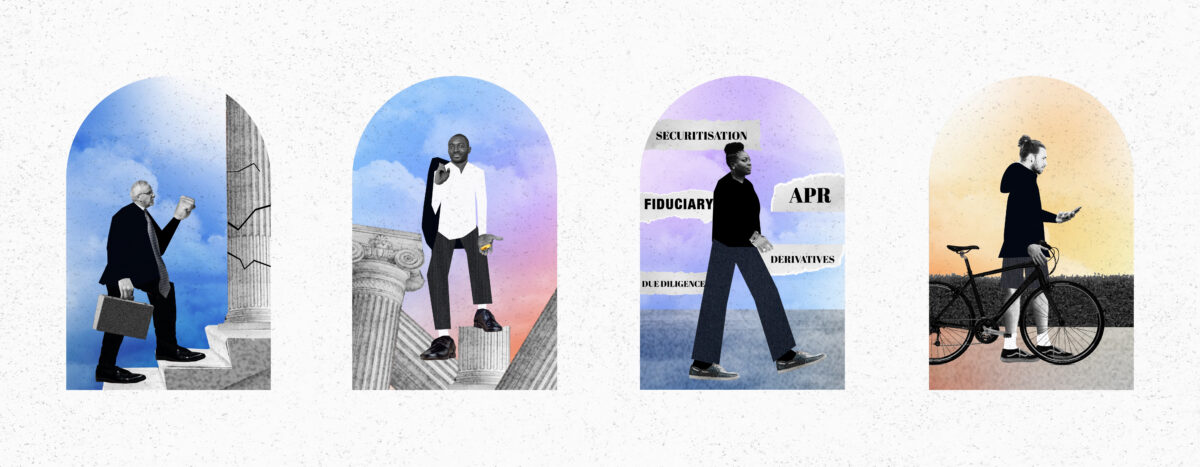We humans are wonderfully varied, but if there’s one thing none of us likes, it’s uncertainty.
Consider a study published a few years ago. The researchers found that people would rather “definitely” get a painful electric shock than maybe get one in the future. Yes, facing a 50% chance of getting shocked was much more stressful to subjects than the prospect of a guaranteed zapping.
The heightened, anxious state that uncertainty puts us in helped us avoid lions and tigers in our evolutionary past. It’s still protective, to an extent, but once this biological stress response is continuously triggered over a prolonged period of time, it can have toxic effects on our brains and bodies.[1]
That’s disturbing news for leaders given that, for more than a year now, most corporate communiques have started with a phrase like “In these uncertain times…”
As organizations contemplate “back to work” communications strategies, it’s important to understand what unrelenting uncertainty is doing to employees: The existential threats (whether medical, environmental or social in nature) that dominated this past year have laced even the lightest unknowns with terror.[2]
Some people are coping by avoiding plans and decisions altogether. Others are playing a marathon game of mental chess on several interlocking boards: “If my partner goes into his office on Tuesdays, but the babysitter is only available on Mondays, then should I reschedule the in-person meeting, or will my mom be two weeks out from her second shot to cover for us this time – or is 11 days out actually OK, and if it isn’t, will I lose my chance to pitch that new client?”
Whether or not companies have settled on a plan, they can’t remove the miasma of uncertainty we’re all living in.
So how can they put out effective and consistent communications, especially if their own chess pieces are still in play?
Another study, this one conducted on mice, offers a clue. A team of neuroscientists recorded the brain activity of mice who were pushed out of their preferred confined and dark corners into wide-open spaces, which they perceive to be rife with danger.
Neurons in an area of the brain involved in memory and emotions lit up and quickly communicated with a region that triggers avoidance behaviors.
In the next trial, when the researchers used optogenetics to turn off these “anxiety cells,” the mice stopped freaking out and started exploring their new, airy surroundings.
The mice were still uncertain about this new space, but since their anxiety neuron pathways were shut down, they no longer connected uncertainty to danger.
People aren’t mice, but the parallels are clear: The best way to engage people right now is to acknowledge uncertainty while de-linking it from danger. Instead of a menu of equally unappealing options, offer them a vision of an open-ended future of positive possibilities.
How can we suppress anxiety pathways with words?
With what we call Transformative Content. It starts with really understanding the audience. That requires being sensitive to all frequencies, not just listening to the loudest voices in the company; soliciting feedback from everyone (without putting anyone on the spot).
The next step is to tell the inspiring story of the company’s next iteration by creating frequent communications that resonate emotionally with employees and offer real guidance.
Leaders should send the message that while they’re eager to get input on the best way to go “back to work,” they also understand that people’s wants and needs might continue to shift.
And once they’ve transmitted the meta message that uncertainty doesn’t have to be scary, the content can spark real action and change within an organization. It can jumpstart employees’ efforts to take part in designing the next phase of work and to start moving comfortably into it.
Leaders are in a perfect position to recognize the toll a year of uncertainty has exacted on employees while also pointing out what it’s bought: a resilience that will help all of us succeed in a future we can’t yet see.
[1] https://www.ucsf.edu/news/2020/11/418951/theres-lot-uncertainty-right-now-what-science-says-does-our-minds-bodies
[2] https://www.washingtonpost.com/health/covid-anxiety-how-to-cope-uncertainty/2020/09/11/fae65832-d1b2-11ea-8d32-1ebf4e9d8e0d_story.html






